So, you have a rabbit? Or maybe you plan to get one soon. You might be worried about what to feed your little fluffball. I understand.
The rabbit diet can feel tricky, especially with all the talk about “Timothy hay this, Timothy hay that.” Ever wondered why Timothy hay is so popular? It’s because it’s great for rabbits.
But here’s the thing: not every rabbit parent has the time or space for loose hay flying around. That’s where Timothy hay pellets come in. They are easy, convenient, and still full of nutrients.
Let’s break it down.
Why Timothy Hay Matters So Much
First, let’s settle the big question: why Timothy hay and not something else? Your rabbit’s digestive system works like a finely tuned engine, but it’s picky about the kind of fuel it takes in.
Timothy hay is loaded with fiber—and trust me, fiber isn’t just a buzzword here. It literally keeps everything moving inside your rabbit’s gut.
On top of that, Timothy hay is lower in protein and calcium compared to alfalfa. That’s good because too much calcium can cause bladder issues.
You don’t want to be paying for bunny medical bills because you skipped the basics.
And here’s the part I love: Timothy hay also helps keep those constantly growing teeth in check. If you’ve ever seen a rabbit’s teeth grow out of control, you know it’s not pretty.
Ever thought about how awkward it would be if humans had teeth that never stopped growing? Exactly.
Pellets vs. Loose Hay: What’s the Deal?
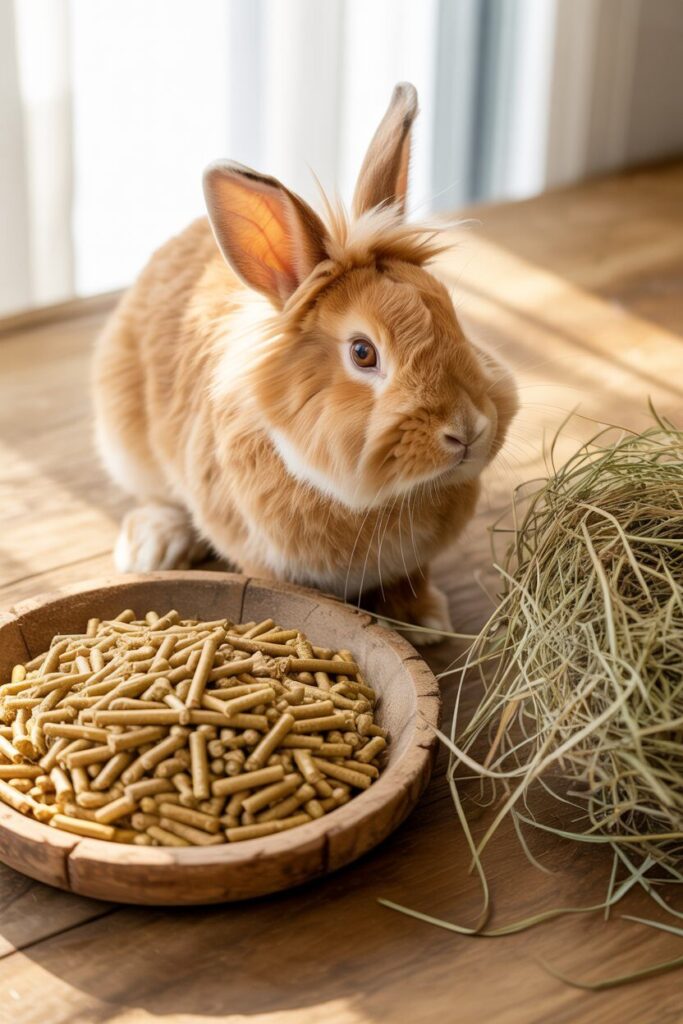
Now, if Timothy hay is so amazing, why even bother with pellets? Good question. I asked myself the same thing when I got tired of sweeping hay out of every corner of my house.
Loose hay pros:
- Encourages natural foraging and chewing
- Great for dental health
- Keeps rabbits entertained
Loose hay cons:
- Messy (seriously messy)
- Spoils faster if it gets damp
- Hard to measure portions
Pellet pros:
- Easy to store and serve
- Balanced with vitamins and minerals
- Less mess (hallelujah!)
Pellet cons:
- Doesn’t provide as much chewing time
- Some pellets sneak in junk fillers
- Rabbits can overeat if you don’t measure
So IMO, the best move is to use both. Keep hay available most of the time, and use Timothy hay pellets as a clean, nutritious supplement.
Think of pellets as the convenience food, but like the healthy version, not the greasy fast-food kind.
What to Look for in Timothy Hay Pellets
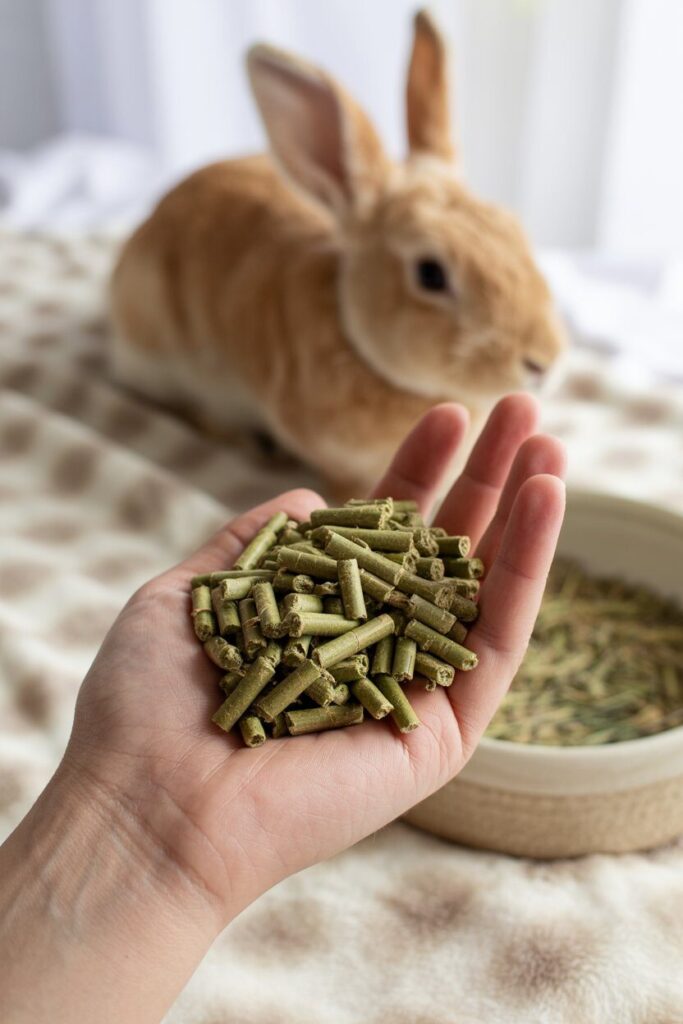
Alright, so you’re convinced pellets are worth a try. But how do you pick the right ones when there are about a million brands out there?
Here’s my checklist for choosing the best pellets:
- 100% Timothy hay-based – Don’t fall for labels that hide alfalfa or random grains in the fine print.
- High fiber content – Look for at least 18% fiber or higher. That’s the sweet spot for digestion.
- Low protein – Anything around 12–14% protein works well for adult rabbits.
- Minimal extras – No colorful bits, seeds, or dried fruit. Your bunny doesn’t need trail mix.
- Freshness and storage – Check expiration dates, and store them in a cool, dry spot. Stale pellets lose nutrition fast.
If a brand nails all these points, you’ve got yourself a winner.
My Top Picks for Timothy Hay Pellets
Now let’s get into the juicy part: the best Timothy hay pellets I’ve tried, researched, or seen other rabbit parents swear by.
Oxbow Essentials Adult Rabbit Food
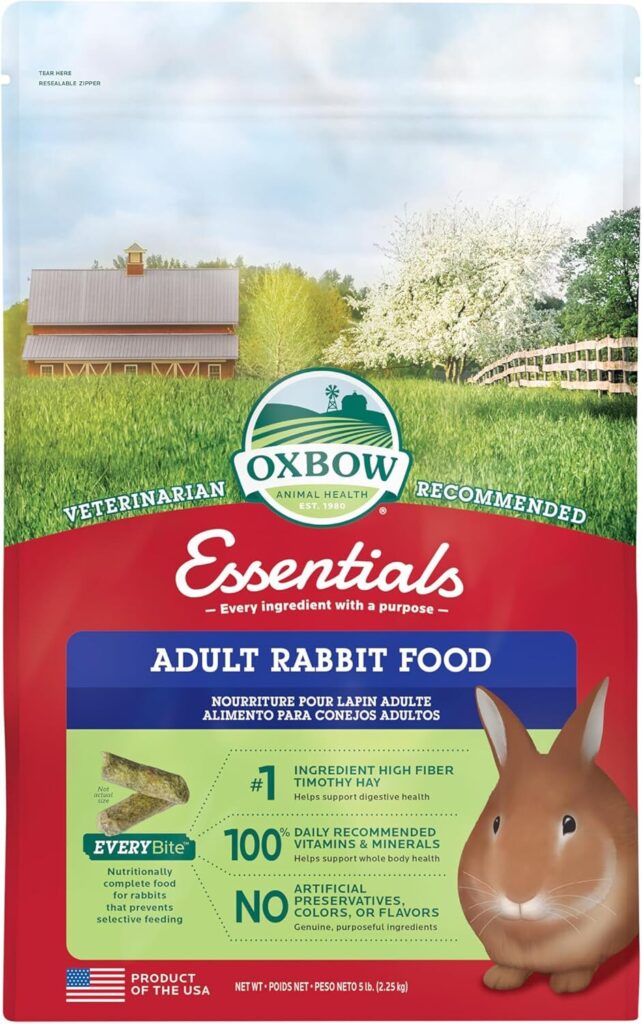
If Timothy hay pellets had a king, this would be it. Oxbow is like the gold standard, and most rabbit vets recommend it. It’s high in fiber, low in protein, and made from—you guessed it—Timothy hay.
Why I love it:
- Consistently fresh and high quality
- Perfect balance of nutrients
- Trusted by vets everywhere
Heads up: It’s not the cheapest option, but honestly, paying a little more for quality beats vet bills later.
Small Pet Select Rabbit Food Pellets
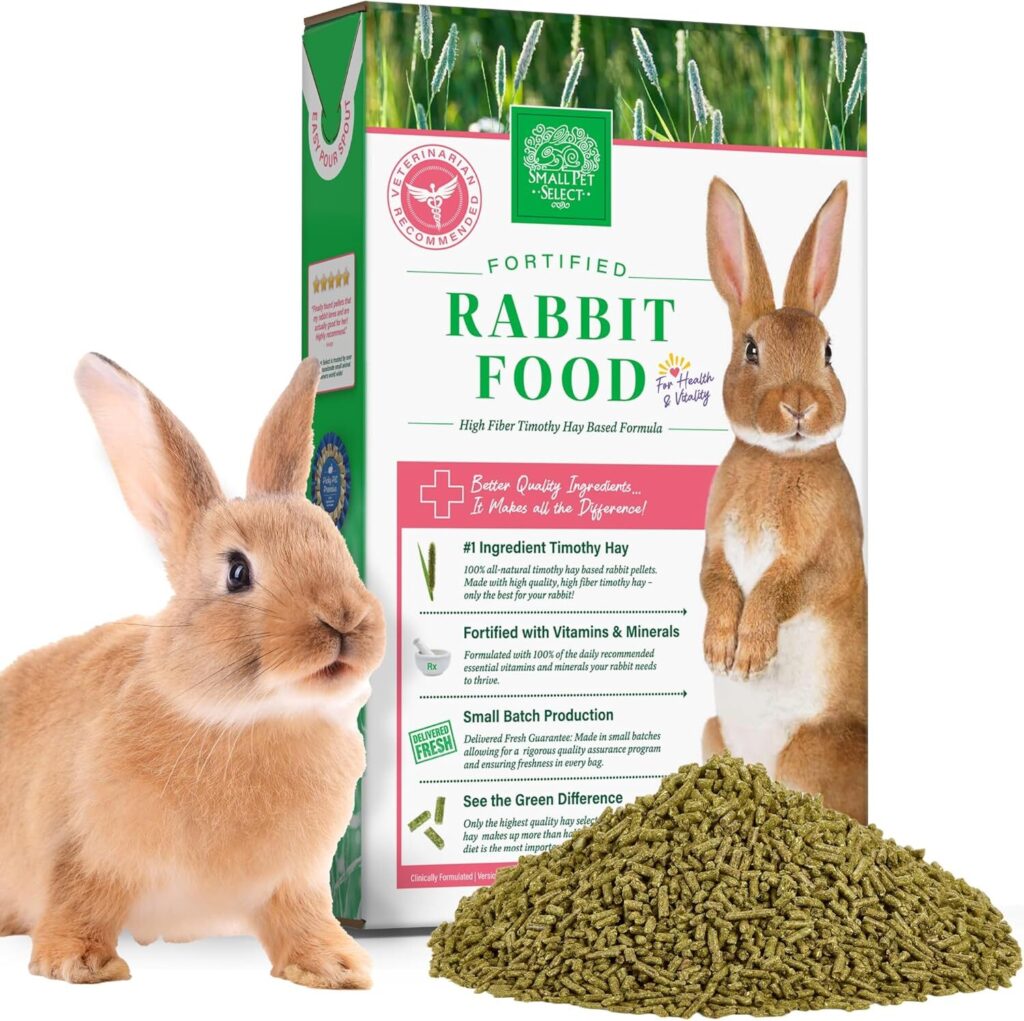
This one feels like the “fresh-from-the-farm” option. Small Pet Select prides itself on small-batch production, so you don’t end up with something that’s been sitting in a warehouse for years.
Why it’s great:
- Made in small batches for freshness
- Rabbits seem to love the taste (at least mine did)
- Fiber-rich with simple ingredients
Minor downside: Sometimes the packaging isn’t as sturdy as bigger brands, so you’ll want to transfer it into an airtight container.
Sherwood Adult Rabbit Food
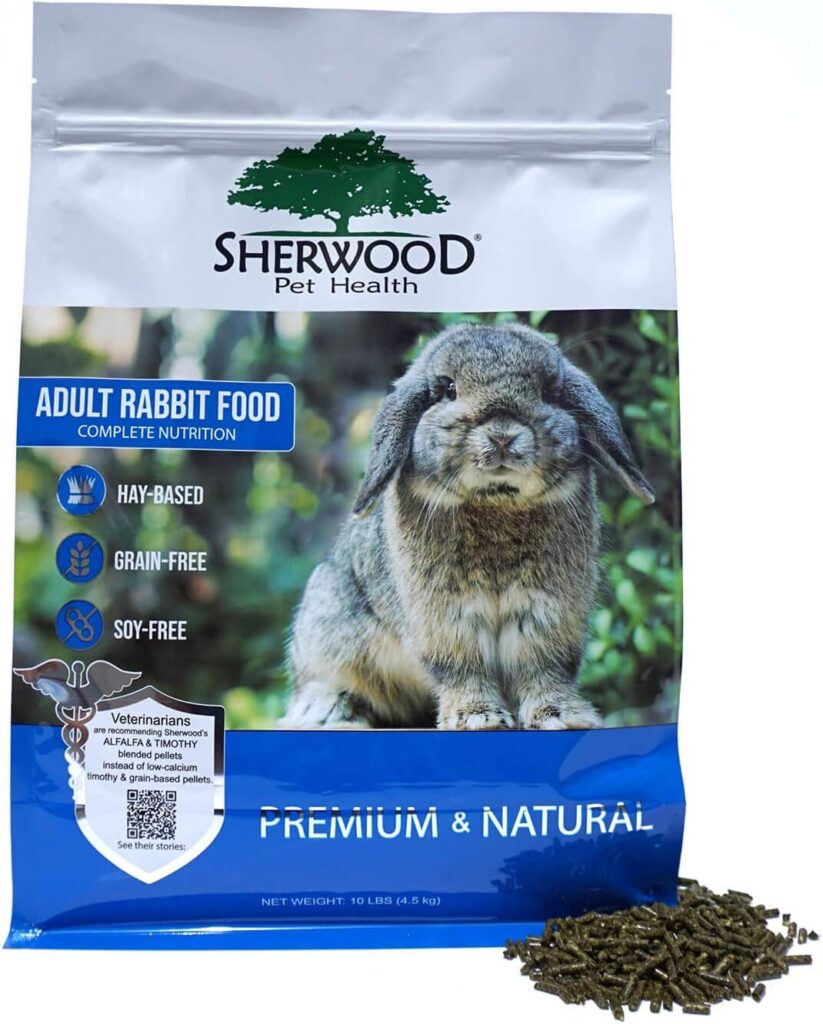
Sherwood is kind of like the trendy health-food brand for rabbits. They emphasize natural ingredients and skip soy and grain fillers completely.
Why it stands out:
- No fillers or soy
- Strong focus on dental health
- Rabbits with sensitive stomachs often do well with it
But note: Some rabbits take a little longer to adjust to the flavor. Don’t freak out if your bunny acts picky at first.
Kaytee Timothy Complete Rabbit Food
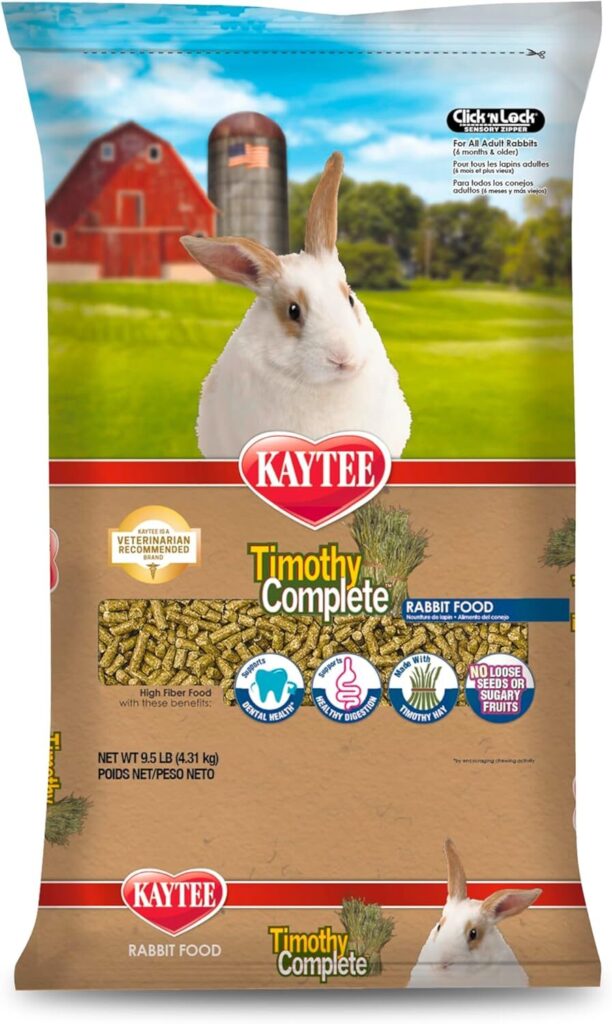
Kaytee is more of a budget-friendly brand, and while it’s not as fancy as Oxbow or Sherwood, it still gets the job done for everyday feeding.
What I like:
- Affordable and easy to find
- Fortified with vitamins and minerals
- A good starter pellet for new rabbit parents
Caution: Quality control can vary, so always double-check the bag before buying.
How Much Pellets Should You Actually Feed?
Here’s where a lot of people get tripped up. Pellets are not an all-you-can-eat buffet. Overfeeding pellets can lead to weight gain, digestive problems, and a lazy rabbit who ignores hay.
General rule of thumb:
- 1/4 cup of pellets per 5 pounds of rabbit body weight daily
But keep in mind, this is just the baseline. Always adjust based on your rabbit’s age, activity level, and overall health. And yes, your bunny will try to convince you they’re starving when the bowl runs low. Don’t fall for the guilt trip.
Mixing It Up: Pellets, Hay, and Fresh Veggies
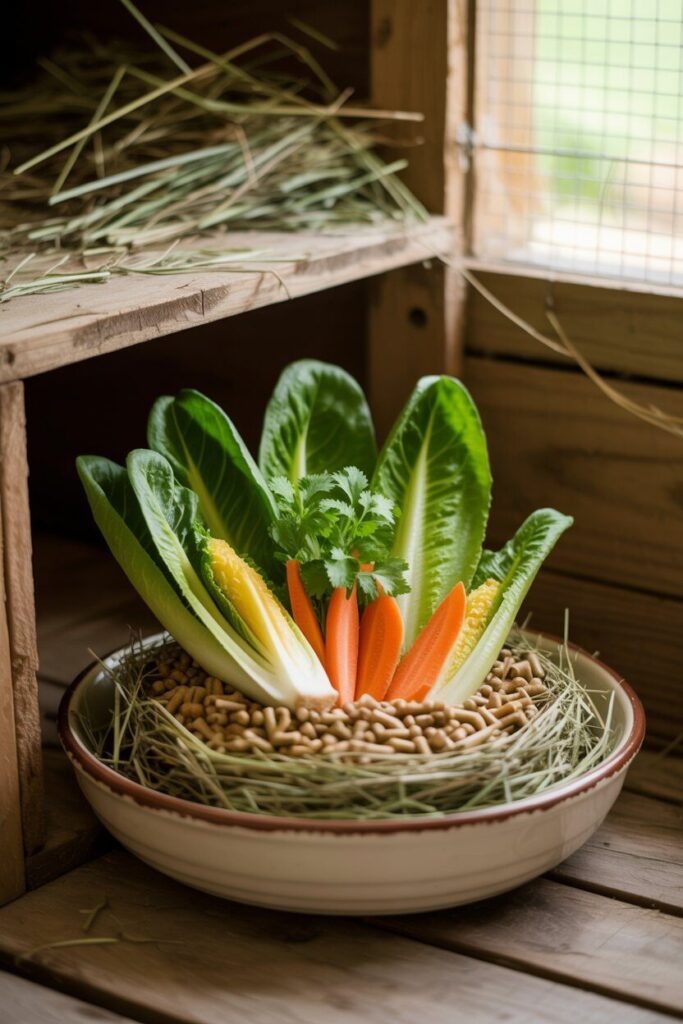
If you’re picturing a perfect rabbit diet, it looks like this:
- Unlimited Timothy hay
- A measured portion of Timothy hay pellets
- Fresh veggies daily (think romaine, parsley, cilantro, kale)
- Occasional treats like apple slices or carrot bits
The magic comes from balance. Too much of one thing can throw everything off. For example, too many pellets and your bunny might ignore hay, which is where most of the fiber should come from.
Ever wonder why rabbits look so happy when they’re munching on greens? It’s because variety keeps them interested—and a happy bunny is way more fun to hang out with.
Common Mistakes to Avoid
Let me save you from some of the rookie mistakes I made early on:
- Buying pellets with colorful bits. Looks cute, but it’s basically rabbit junk food.
- Overfeeding pellets. Your rabbit doesn’t need a mountain of food. Trust me.
- Ignoring hay. Pellets can’t replace hay, no matter how high-quality they are.
- Skipping fresh veggies. Variety matters for nutrition and mental stimulation.
- Not checking expiration dates. Old pellets lose nutrients and taste awful.
You don’t have to learn these lessons the hard way like I did.
Why Rabbits Actually Prefer Pellets Sometimes
Okay, let’s be real. Some rabbits act like they’ve won the lottery when you bring out pellets. Why? Because pellets are concentrated nutrition, and they taste like a richer, denser version of hay.
Imagine someone offered you a plain salad versus a perfectly seasoned wrap—it’s basically the same ingredients, but one feels more indulgent. That’s how pellets feel to your bunny.
But don’t let them fool you. Just because they beg for pellets doesn’t mean they don’t need hay. It’s kind of like how I crave pizza even though I know veggies are better for me. Balance, my friend. Balance.
Storing Pellets the Right Way
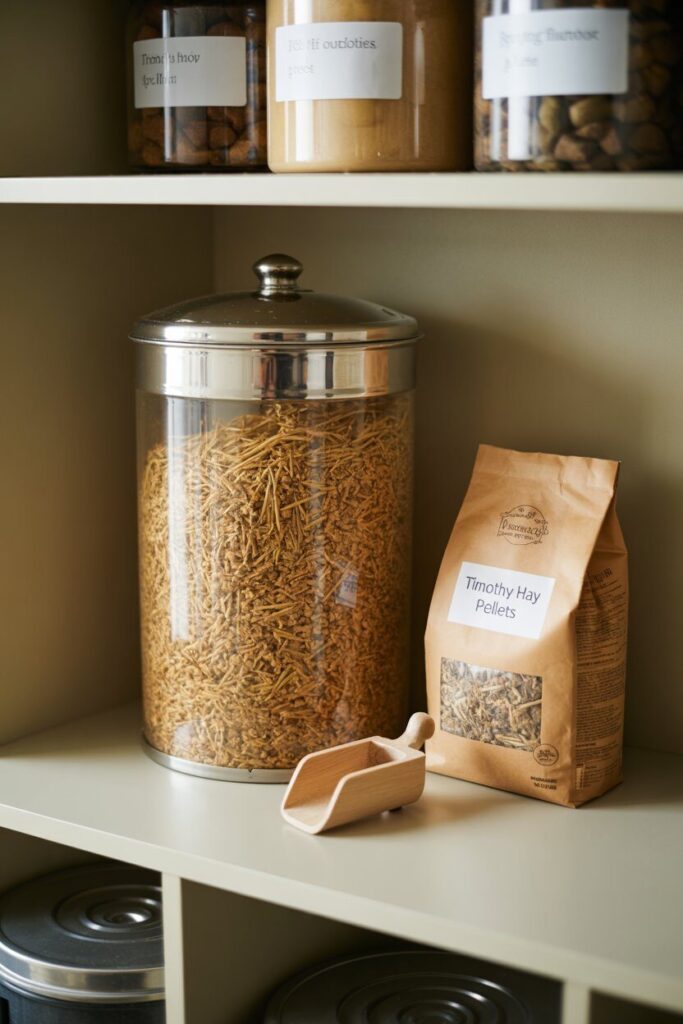
Quick tip before we wrap this up: storage matters more than you think. Pellets can lose freshness fast if you leave them open.
Always store them in a sealed container, away from heat and moisture. A simple airtight bin works perfectly.
And don’t buy more than you can use in a couple of months. Bulk bags might seem like a good deal, but stale pellets are basically useless.
Final Thoughts
So, what’s the takeaway here? Timothy hay pellets are a fantastic addition to your rabbit’s diet, but they’re not the whole picture.
The best Timothy hay pellets keep things simple: high fiber, low protein, no junk fillers.
Brands like Oxbow, Small Pet Select, Sherwood, and Kaytee all bring something to the table depending on your budget and preferences.
Remember, pellets should complement, not replace, unlimited hay and daily fresh veggies. Keep portions reasonable, store pellets properly, and avoid the junky, colorful stuff.
At the end of the day, a healthy rabbit is a happy rabbit—and honestly, nothing beats seeing that little nose twitching away as they munch on food you know is good for them.
And hey, if you ever get tired of sweeping up hay, just remind yourself: at least you’re not cleaning up after a Great Dane.
Are Timothy Hay Pellets Better Than Loose Hay for Rabbits?
Timothy hay pellets are easy to use and full of nutrients. However, they can’t replace loose hay. Loose hay offers natural foraging and helps keep your rabbit’s teeth healthy by encouraging chewing.
Pellets are easy to measure, less messy, and provide balanced nutrition.
The best choice is a mix of both. Always have unlimited loose hay for dental and digestive health. Use Timothy hay pellets for extra nutrition and convenience. This balance keeps your rabbit happy and healthy.
How Much Timothy Hay Pellets Should I Feed My Rabbit?
Adult rabbits need about 1/4 cup of Timothy hay pellets for every 5 pounds of body weight each day. This helps prevent overeating while providing necessary nutrients.
Remember, pellets shouldn’t be the main diet. Always provide unlimited Timothy hay and offer fresh veggies daily. Adjust pellet amounts based on your rabbit’s age, activity, and health.
Can I Feed Timothy Hay Pellets to Baby Rabbits?
Baby rabbits need different nutrition than adults. They thrive on alfalfa-based pellets, which are rich in protein and calcium for growth. Once rabbits reach about 7 months, switch to Timothy hay pellets.
Transitioning too early to Timothy hay may not meet a growing bunny’s needs. Always consult your vet before changing a young rabbit’s diet.
What Should I Look for When Buying Timothy Hay Pellets?
Choose pellets made from 100% Timothy hay. Avoid fillers like seeds, nuts, or colorful bits. The best pellets have at least 18% fiber, moderate protein (about 12–14%), and low added sugars or artificial ingredients.
Check expiration dates for freshness. Store pellets in an airtight container, away from moisture and heat. Stale pellets can lose nutrients and may discourage your rabbit from eating them.
Why Won’t My Rabbit Eat Timothy Hay Pellets?
Some rabbits can be picky, especially if they’re used to sweetened pellets or colorful treats. Switching to plain Timothy hay pellets may need some patience.
Gradually mix the new pellets with the old food to help with the transition.
Check the freshness and storage, too. Rabbits won’t eat stale pellets, and who can blame them? If your bunny still refuses to eat after a week or two, consult your vet to rule out any dental or health issues.
